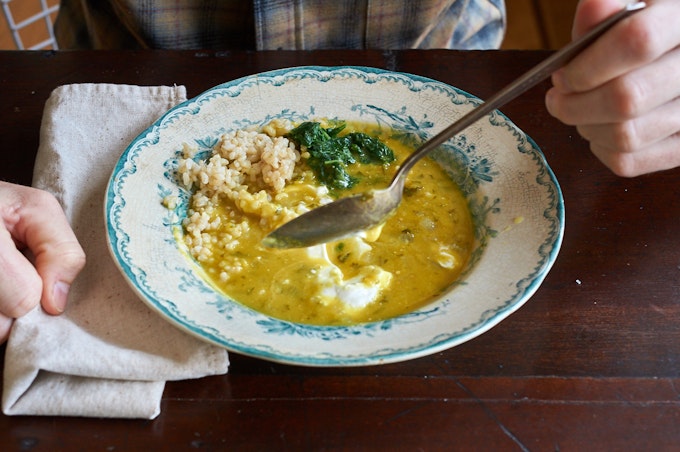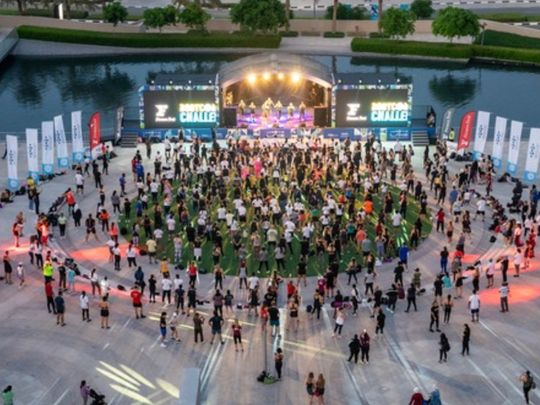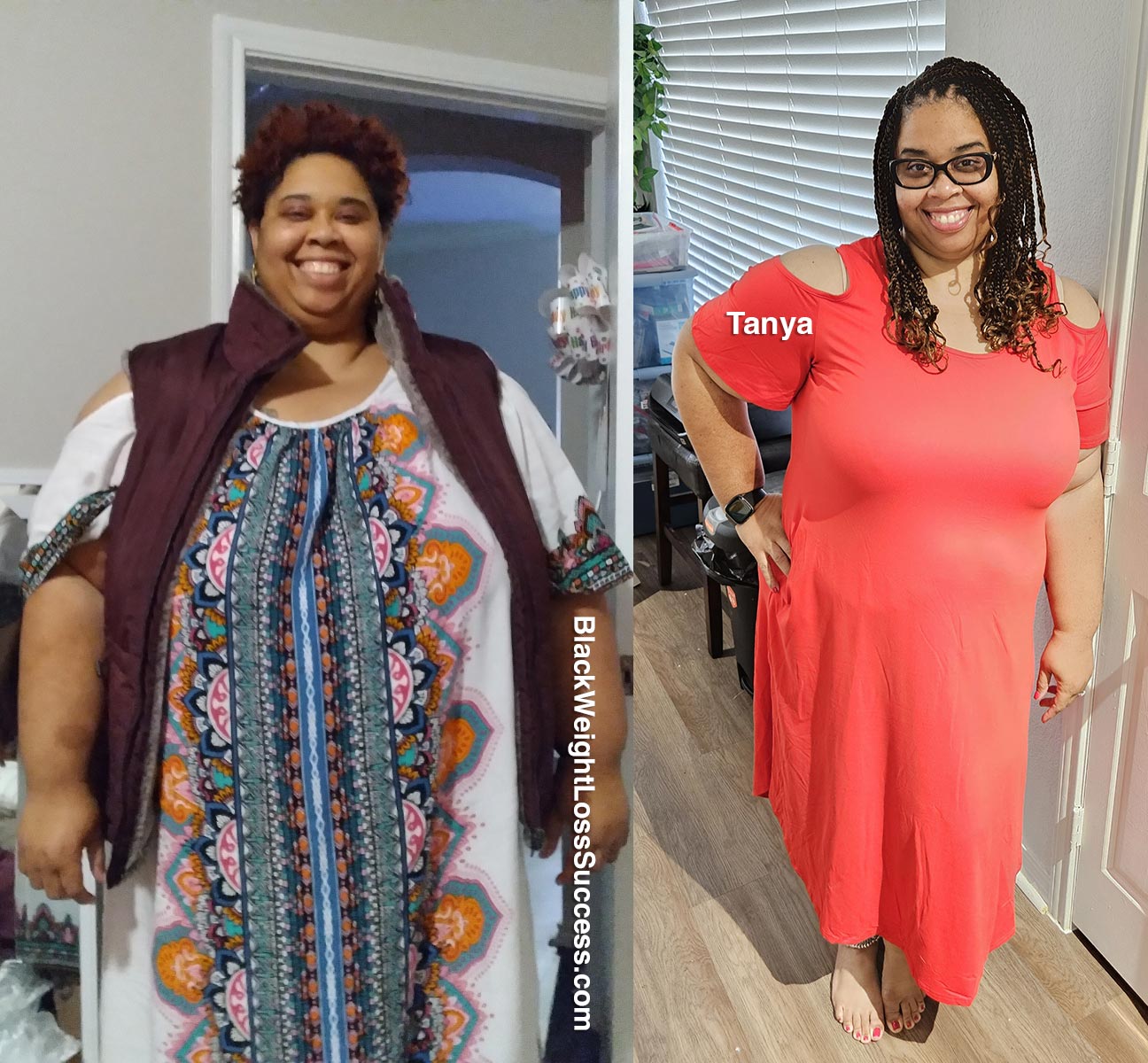
Engaging in yoga for stress relief can be one of the best things you can do! This holistic wellness practice not only promotes flexibility and alleviates pain, but helps release emotions and tension by working on muscle knots and other physical blockages.

You can use any or all of these poses of yoga for stress relief. Just pick a cozy corner of your house for a few minutes of relaxation. You can also take your yoga practice outdoors as nature can offer an extra dose of positive energy. Read on to learn more about the above-mentioned calming yoga poses for stress relief in detail.
1. Uttanasana (Standing Forward Bend)
2. Paschimottanasana (Seated Forward Bend)
3. Marjaryasana To Bitilasana (Cat-Cow Pose)
4. Sukhasana (Easy Pose)
5. Janu Sirsasana (Head-To-Knee Forward Bend)
6. Setu Bandhasana (Bridge Pose)
7. Savasana (Corpse Pose)
8. Balasana (Child’s Pose)
Tips When Using Yoga For Stress Relief
Frequently Asked Questions (FAQs)
1. Uttanasana (Standing Forward Bend)

Image: Shutterstock
While the Standing Forward Bend pose calms the brain and relieves stress, it also stimulates the kidneys and liver and stretches the hips, hamstrings, and calves.
Steps:

- Stand in Tadasana or Mountain pose, keeping your hands at your hips.
- Bend the knees slightly, folding the torso over the legs. Remember to hinge from the hips, not the lower back.
- Keep next to your feet or in front of you on the ground.
- Inhale and extend your chest to lengthen the spine.
- Exhale, gently pressing both legs forward without hyper-extending. Lifting kneecaps, gently rotate your thighs backward.
- On exhalation, extend your torso downwards, keeping your back straight. Elongate your neck, extending your head downwards. Draw shoulders downwards and towards the hips.
Protect your lower back while practicing this yoga for stress relief. The above infographic shows the different variations of standing forward bend.
Tip: Avoid Uttanasana if you’re suffering from glaucoma or sciatica, are pregnant, or if you have a lower back, ankle joint, or knee joint injury.
Also Read – Why You Need to Be Doing Uttanasana
2. Paschimottanasana (Seated Forward Bend)

Image: Shutterstock
Forward bend poses are said to relieve stress and improve mood.
Steps:
- Sit in Dandasana or Staff pose, keeping your legs straight in front of you.
- Extend your arms straight out to the sides, then up over your head towards the ceiling.
- Inhale and elongate your spine upwards.
- Exhale, hinge at your hips, and move forward.
- Allow the neck to remain as a natural extension of the spine; don’t crank it or let it loose.
- Hold your ankles or shins and keep your feet flexed strongly.
Tip: Keeping the back straight for as long as possible will help you take full breaths.
3. Marjaryasana To Bitilasana (Cat-Cow Pose)

Image: Shutterstock
Marjaryasana-Bitilasana is a combined yoga asana that resembles a cat and a cow. This easy and gentle pose warms up the spine and belly.
Steps:
- Get down on your hands and knees, keeping the back flat in a tabletop position.
- Ensure knees are directly below hips and hands are perpendicular to the ground.
- Inhale, lifting the sitting bone and chest towards the ceiling. Allow the stomach to sink downwards. Lift your head up and keep your gaze fixed forward. This is the Bitilasana or Cow pose.
- Now exhale, rounding your upper back upwards. Take your gaze downwards to the navel, and press hands and feet into the ground. This is called the Marjaryasana or Cat pose. Repeat 10-20 times.
Tip: This yoga asana brings about emotional balance, and boosts mental peace. If you have a neck injury, be careful while practicing this pose, ensuring the head is in a straight line with the torso.
4. Sukhasana (Easy Pose)

Image: Shutterstock
This pose refers to any comfortable, cross-legged seated position. You can use props such as towels, bolsters, or yoga blocks to help you feel comfortable.
Steps:
- Arrange supportive padding under your sitting bones to keep your hips higher than your knees.
- Sit on the padding comfortably in a cross-legged position.
- Lean side to side and back and forth using your torso a few times, making sure the shoulders are directly over the hips.
- Slide shoulder blades down the back, away from the ears. Keep the head risen towards the ceiling.
- Keep hands resting in your lap or on your thighs. Palms facing upwards will help you feel receptive, with downwards-facing palms keeping you grounded.
- Inhale and feel your spine elongate; exhale and push yourself down through your buttocks.
Tip: This asana is commonly used for breathing exercises and meditation. It stretches the knees and ankles, strengthens the back, and opens tight hips.
5. Janu Sirsasana (Head-To-Knee Forward Bend)

Image: Shutterstock
This yoga asana improves posture, counteracting the effects of prolonged sitting. It can calm the mind, and help with fatigue, anxiety, and depression.
Steps:
- Start with Dandasana or Staff pose, seated on the floor with legs together, stretched out in front and back straight.
- Bend the right knee and bring the sole of the right foot to rest on your left inner thigh.
- Inhale and elongate the sound.
- Exhale and place your right hand on the outside of the left thigh. Also, place the left hand behind the left hip.
- Bend at the hips and lean forward. Reaching for your left foot, clasp the left wrist with the right hand.
- Inhale and push the sternum forwards. On exhalation, rotate the ribs towards the left knee.
- Inhale and lift the chest to exit the pose. Straighten your right leg to return to the Staff pose. Repeat on the left side.
Tip: If you have knee pain, keep the bent knee closer to the straight leg.
6. Setu Bandhasana (Bridge Pose)

Image: Shutterstock
This yoga pose stretches the chest and abdomen while strengthening the back muscles, glutes, thighs, and ankles.
Steps:
- Lie down on your back with knees bent, and legs and feet parallel and hip-width apart. Keep feet close to the buttocks.
- Press downwards firmly using your feet. Inhale and raise your hips. Remember to lift from the pubic bone instead of the navel.
- Clasp your hands on the floor, under your back; broaden the collarbones.
- Make the shins firm, rolling your upper thighs inwards. Use the heels to press down firmly, lifting thighs and buttocks higher, keeping thighs parallel.
- Exhale, release the hands, and lower them to the floor. Rest your back in a natural state.
Tip: Setu Bandhasana counteracts the effects of prolonged sitting by improving posture and relieving lower back pain.
7. Savasana (Corpse Pose)

Image: Shutterstock
Savasana is the practice of relaxing one body part and thought at a time. Practicing it daily conditions the body to release stress and boosts emotional well-being.
Steps:
- Lie down on your back. Keep legs separate and let go of them so that the feet fall open to either side.
- Keep arms alongside the torso with palms facing upwards. Keep fingers relaxed and let them curl in.
- Relax the whole body and face. Keep breathing normally.
- Stay still for at least 5-10 minutes, focusing on your breathing.
- Reawaken your body by deepening breathing, followed by wiggling your fingers and toes.
- Do a full-body stretch while still lying down.
- Pull your knees to your chest, rolling over to any side.
- Keep your eyes closed and rest in the fetal position for a few breaths, using the bottom arm to support your head.
- Get into a sitting position.
Tip: Practise this pose before sleeping to promote deep, quality sleep.
8. Balasana (Child’s Pose)

Image: Shutterstock
This pose stretches the back, hips, and thighs, and helps relieve back pain. Balasana is used as part of the practice where you develop listening to your body’s inner voice.
Steps:
- Get onto your hands and knees on the floor.
- Keep the knees wide, with the big toes of both feet touching.
- Rest your belly between your thighs and forehead on the floor.
- Keep eyes, jaw, and shoulders relaxed.
- Hold the position for as long as you want.
Tip: Keep the neck in a neutral position. Use a prop for help, if required.
Tips When Using Yoga For Stress Relief

Image: Shutterstock
When you’re looking for a particular result with yoga practice, make sure you pick your asanas correctly. If you have any other contraindications, speak to your doctor or a yoga expert before beginning your practice.
Apart from yoga, use breathing exercises, called pranayama. These will help you regulate your breath, reduce stress, enhance sleep quality, and encourage mindfulness.
Tip: Breathing exercises can be done during yoga, throughout the day, or during specific situations like when you need to focus or are feeling anxious.
Frequently Asked Questions (FAQs)

Image: Shutterstock
Q. Which is the best style of yoga for stress relief?
A. Hatha yoga is a good choice for stress management. This is one of the most common types of yoga. If you’re a beginner, you might like it for its slow pace and easy movements.
Q. How effective is yoga for stress relief?
A. Yoga asanas work effectively for stress relief. Perform them consistently and you’re sure to feel a positive difference in the way you feel physically, emotionally, and mentally.
Q. How does yoga reduce stress?
A. Yoga can lower stress hormones in the body while increasing brain chemicals such as endorphins and GABA (gamma-aminobutyric acid). These beneficial chemicals decrease anxiety and boost mood.
Also Read – Different Types Of Yoga Asanas And Their Benefits







































